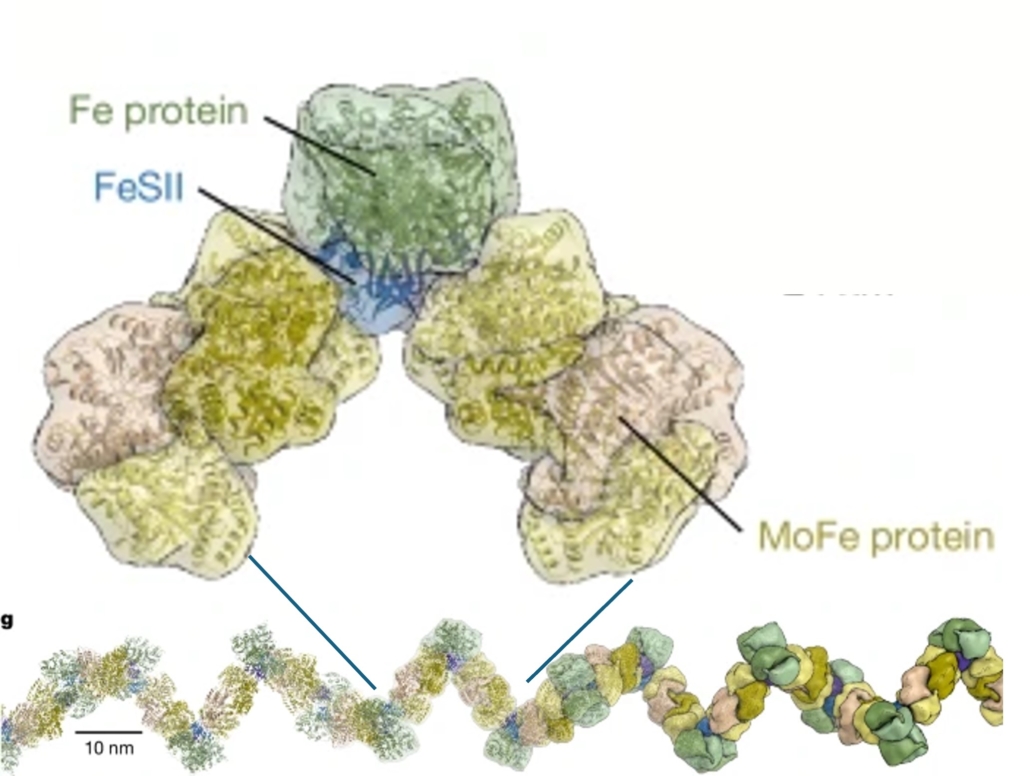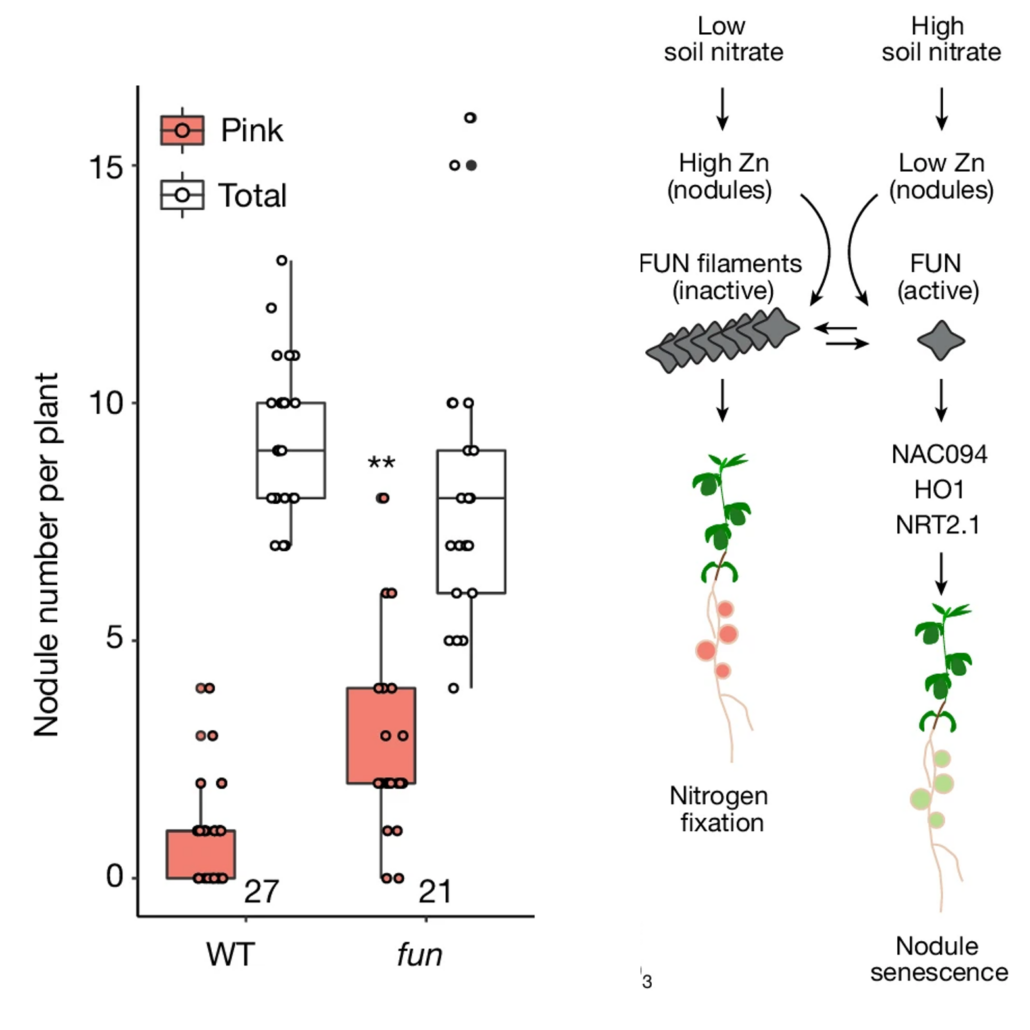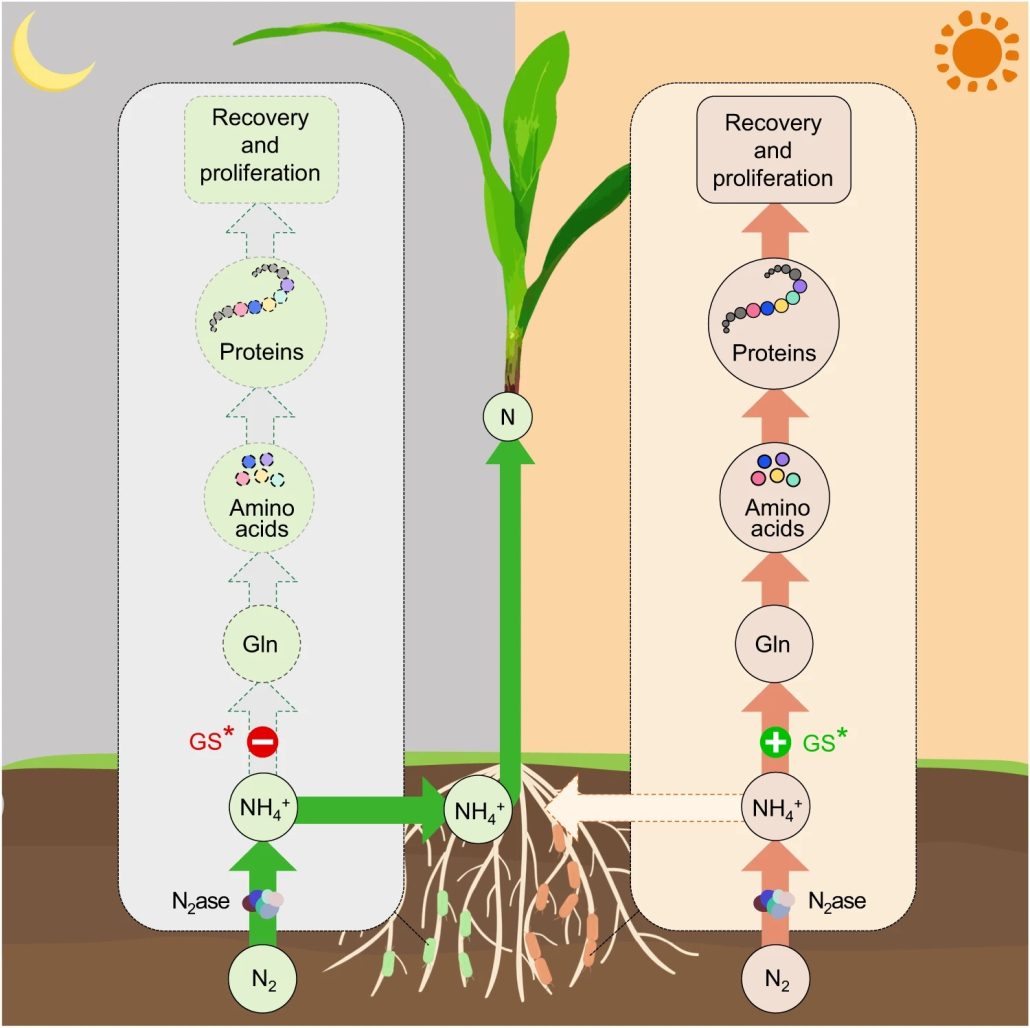
How nitrogenase stays active
Plant Science Research WeeklyOne of the great dilemmas of science is the fact that nitrogen gas, though very abundant in the atmosphere, is limiting for most forms of life. Of course, this lack of availability is because N2 gas has an extremely strong triple bond holding the two nitrogen atoms together; it’s so strong that N2…

Zinc regulates symbiotic nitrogen fixation in response to soil nitrate
Plant Science Research WeeklyLegume plants inhibit the energy-intensive process of symbiotic nitrogen fixation when sufficient nitrate is present, primarily through nodule senescence. However, the nodule-specific genetic regulatory mechanisms of nitrate sensing and nodule senescence are poorly understood. A recent study by Lin and…

Diurnal switches in diazotrophic lifestyle increase nitrogen contribution to cereals
Plant Science Research WeeklyUnlike legumes, which form symbiotic associations with nitrogen-fixing bacteria (diazotrophs), high-yielding cereal crops are usually supplemented with inorganic fertilizers that are both energetically and environmentally problematic. Some non-legumes can obtain nitrogen from associations with free-living…

